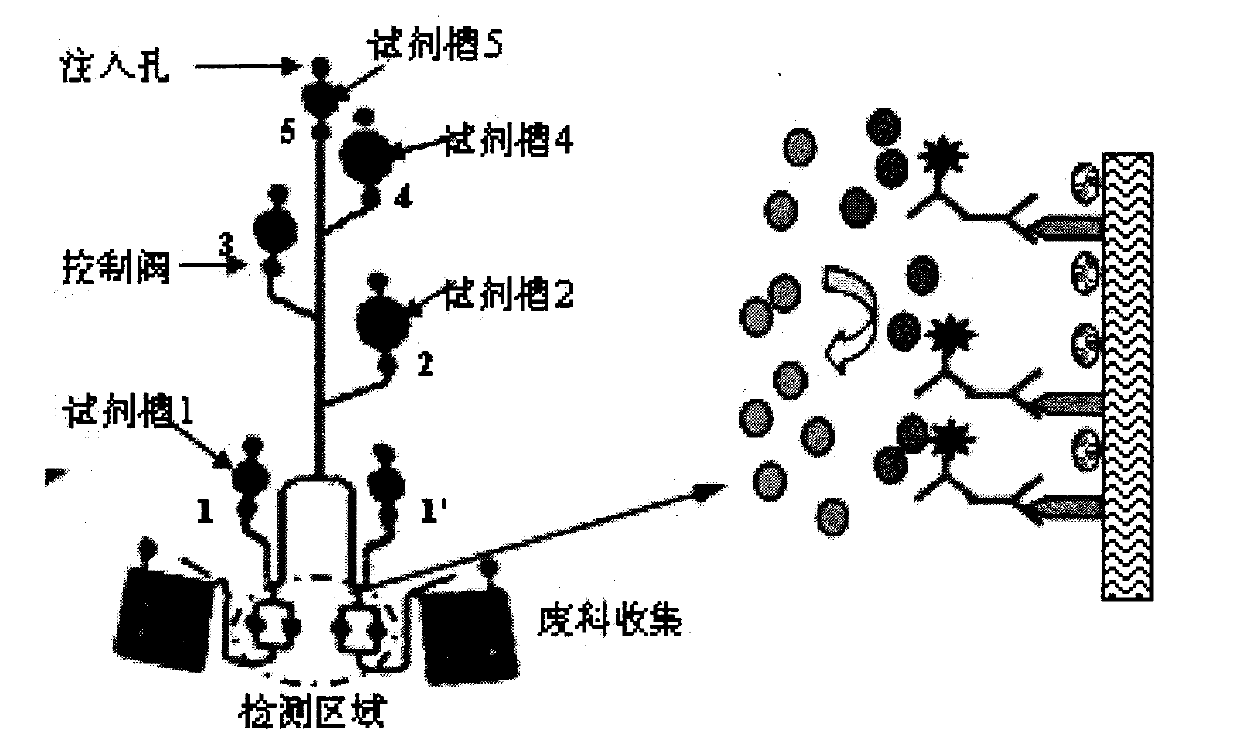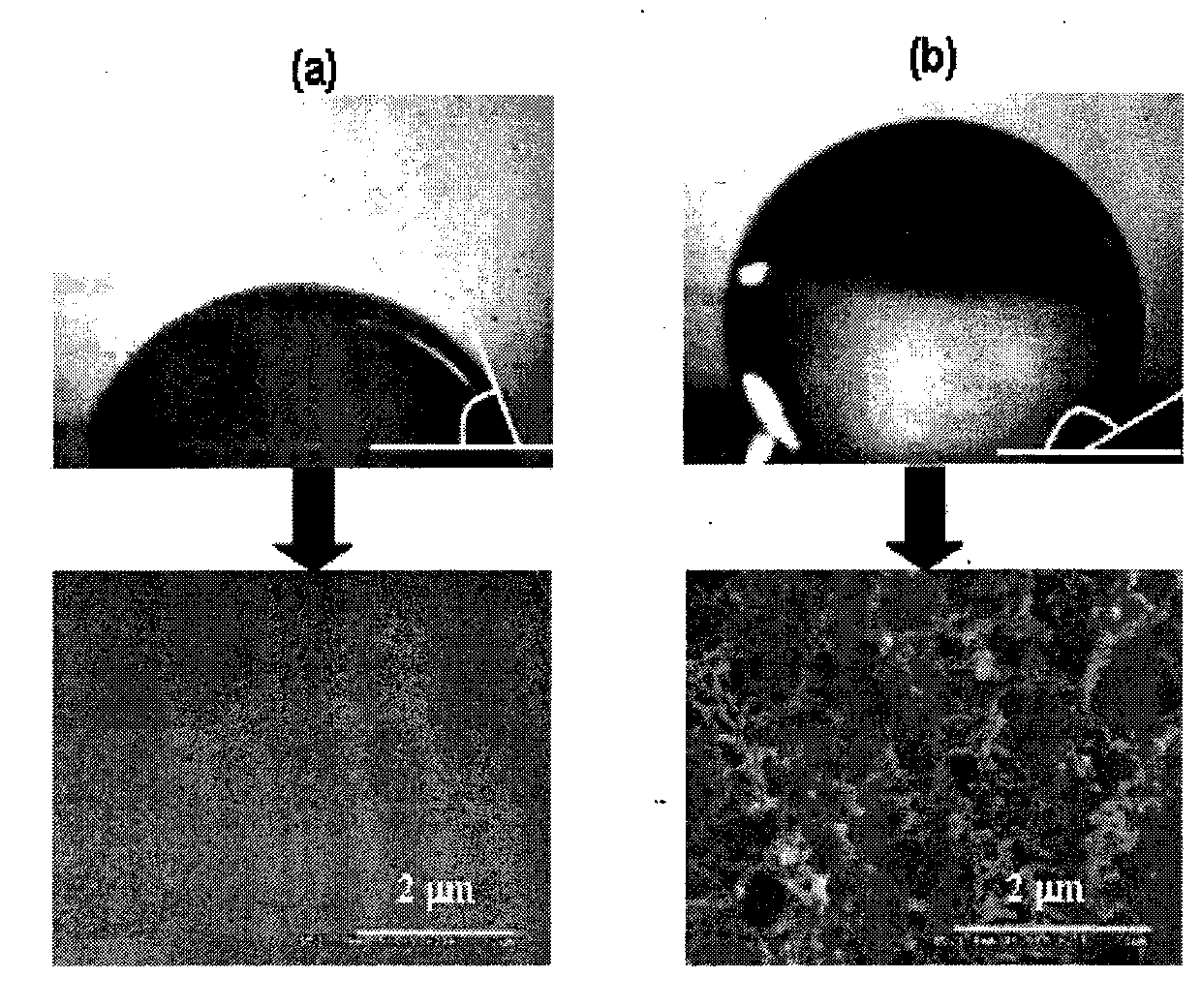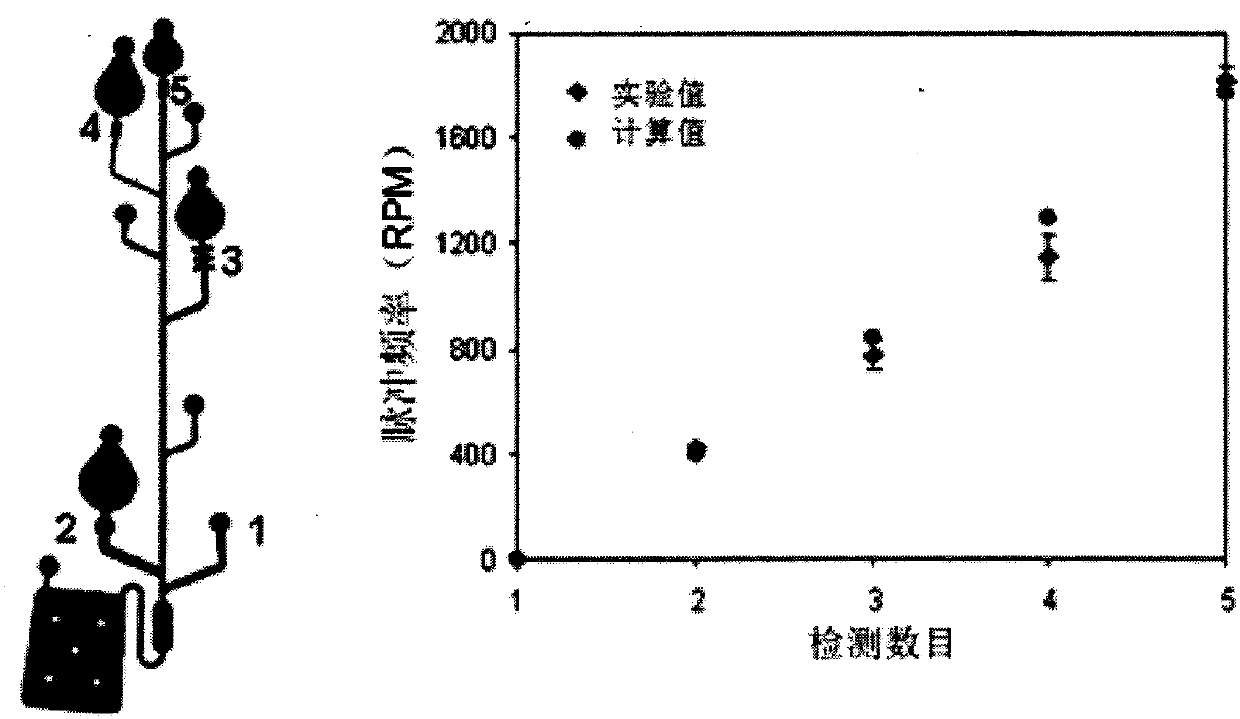Novel ELISA biochemical optical disk detection system
An enzyme-linked immunosorbent assay and enzyme-linked immunosorbent technology, applied in the direction of analytical materials, instruments, etc., can solve problems such as slow development, and achieve the effects of powerful functions, controllable flow rate, and improved detection sensitivity.
- Summary
- Abstract
- Description
- Claims
- Application Information
AI Technical Summary
Problems solved by technology
Method used
Image
Examples
Embodiment 1
[0025] Example 1: Design of ELISA CD-ROM
[0026] figure 1 It is the schematic diagram of the design of the enzyme-linked immunosorbent biochemical detection CD-ROM. Antibodies and antigens are placed in reagent tanks 1 and 1', markers and substrates are placed in reagent tanks 3 and 5, respectively, and reagent tanks 2 and 4 are used for washing solutions. The detection disc designed by the present invention contains many microfluidic design components, for example, the design of valves, injection holes, reagent tanks, detection areas, and waste liquid collection pools. One ELISA disc can detect 12, 24 or 48 samples, or one CD can perform 12, 24 or 48 ELISA tests on one sample.
Embodiment 2
[0027] Embodiment 2: Improvement and flow rate control of super-hydrophobic valve
[0028] Using amorphous fluoropolymer (CYTOP 805A) and polyaniline nanofibers to cover the surface of polymethyl methacrylate (PMMA), the contact angle and SEM photos before and after protein adsorption were compared, see figure 2 . The results showed that the PMMA surface modified by CYTOP 805A-polyaniline nanofibers was superhydrophobic, and the protein adsorption had little effect on the valve contact angle (only decreased from 175° to 167°). The snapshot photos after loading the dye solution show that the CYTOP-polyaniline nanofiber modified valve can effectively control the programmed burst release and flow rate of the liquid. Compared with other commercial surface modification technologies, the surface modification of CYTOP-polyaniline nanofibers is simple to operate, requires almost no equipment, low cost, uniform distribution of modified surface, smaller intra-batch and inter-batch dif...
Embodiment 3
[0030] Example 3: Optimization of primary antibody adsorption
[0031] as indicated Figure 4 As shown, polyethyleneimine PEI was used as a bridging agent, tyrosinase (TR) catalyzed the reaction, and protein A was immobilized on the PMMA surface for the detection of γ-interferon antibody. The results show that due to the spatial distance formed by the PEI chains, the antibodies have enough space to arrange in order and maintain good activity. Compared with the traditional glutaraldehyde cross-linking method, not only the binding rate and detection sensitivity of the antibody are improved (by 5-10 times), but also the detection signal intensity is increased by 62 times ( Figure 5 ).
PUM
 Login to View More
Login to View More Abstract
Description
Claims
Application Information
 Login to View More
Login to View More - R&D
- Intellectual Property
- Life Sciences
- Materials
- Tech Scout
- Unparalleled Data Quality
- Higher Quality Content
- 60% Fewer Hallucinations
Browse by: Latest US Patents, China's latest patents, Technical Efficacy Thesaurus, Application Domain, Technology Topic, Popular Technical Reports.
© 2025 PatSnap. All rights reserved.Legal|Privacy policy|Modern Slavery Act Transparency Statement|Sitemap|About US| Contact US: help@patsnap.com



